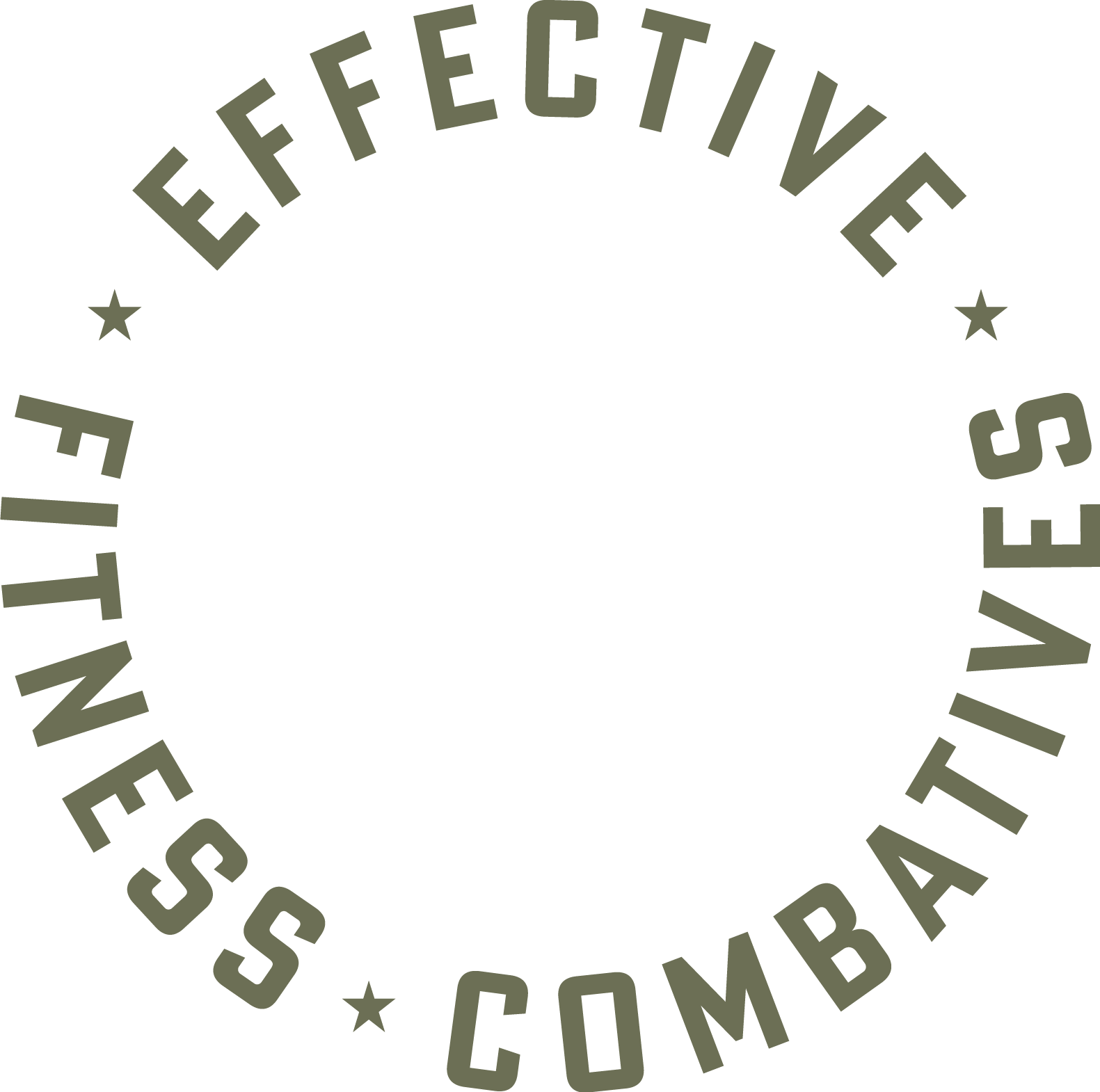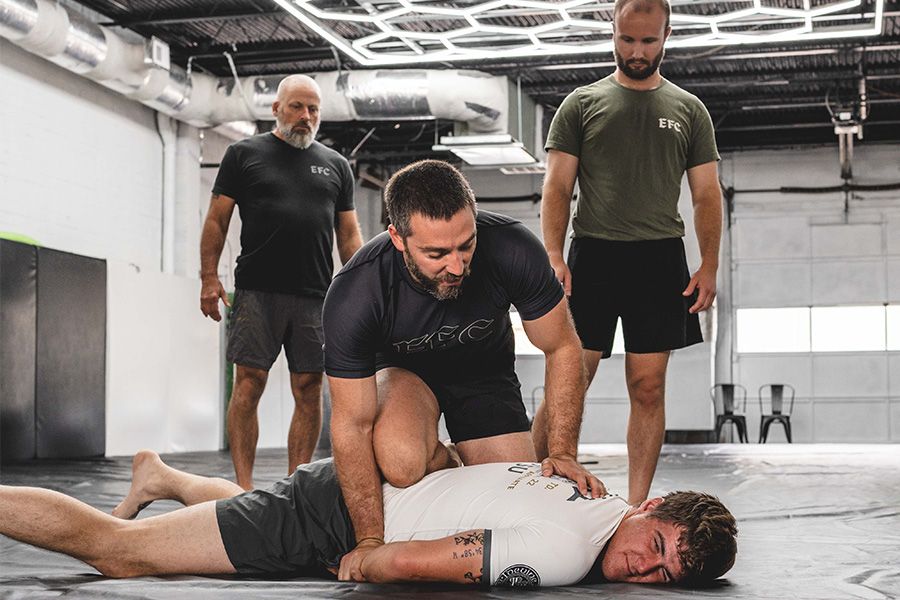In our last article, we outlined three reasons why you should start a Police Grappling Club at your Department. This begs the question, how do we get our administration on board?
I started a grappling program at my agency about a year ago.
In the first 8 months, the program went from three active members to over 100 with class sizes ranging from 10-30 each week.
So how did I build this program? It started with myself and two coworkers meeting off duty at the academy mat room. We would watch YouTube videos of Jiu-Jitsu and MMA techniques and try to replicate them on each other (the good news is, now you have EFCombatives).
Eventually, we joined a local Brazilian Jiu-Jitsu gym and sought to professionalize our training. However, we continued to meet on occasion in the local academy mat room to practice. Our group started with three, over time grew to 5 and then 10 and soon 20. It was around that time that I decided to petition the department to try and gain support and approval to make my small club official and supported by the agency.
I wrote an intradepartmental correspondence to my Commander of Training. I pitched my grappling club as a means to increase Officer Safety and Wellness. The idea was well received and I was approved to appoint one instructor, one day a week to teach the class.
Here are three key points I used to get the brass to buy into a grappling program.
I started a grappling program at my agency about a year ago.
In the first 8 months, the program went from three active members to over 100 with class sizes ranging from 10-30 each week.
So how did I build this program? It started with myself and two coworkers meeting off duty at the academy mat room. We would watch YouTube videos of Jiu-Jitsu and MMA techniques and try to replicate them on each other (the good news is, now you have EFCombatives).
Eventually, we joined a local Brazilian Jiu-Jitsu gym and sought to professionalize our training. However, we continued to meet on occasion in the local academy mat room to practice. Our group started with three, over time grew to 5 and then 10 and soon 20. It was around that time that I decided to petition the department to try and gain support and approval to make my small club official and supported by the agency.
I wrote an intradepartmental correspondence to my Commander of Training. I pitched my grappling club as a means to increase Officer Safety and Wellness. The idea was well received and I was approved to appoint one instructor, one day a week to teach the class.
Here are three key points I used to get the brass to buy into a grappling program.
1. Be Organized:
When I met with my administration, I created a written proposal that included a mission statement, benefits to the department, potential costs, and studies to support the project. Time is precious to the command staff and they will not want to wait around while you stumble through a half-assed presentation.
Click Here to Download an Example of that Proposal.
Click Here to Download an Example of that Proposal.
2. Be Frugal:
Do your best to make this training incur no cost to the department. My initial proposal was for one instructor, one day per week, to be administratively assigned to teach for the day (there was a caveat that this instructor could not create overtime on the road). All attending officers were off duty and the training was to be held at the academy mat room.
The net cost of running the program on its face is zero. After the first year of training (2022-2023), I have been given authorization to start a second day per week of instruction. As we continue to grow, I hope to start soliciting funds for equipment and eventually move for the training to be conducted “on duty.” Lasting change is often incremental change, getting the department to invest will be much easier once I have a long-standing and successful program.
The net cost of running the program on its face is zero. After the first year of training (2022-2023), I have been given authorization to start a second day per week of instruction. As we continue to grow, I hope to start soliciting funds for equipment and eventually move for the training to be conducted “on duty.” Lasting change is often incremental change, getting the department to invest will be much easier once I have a long-standing and successful program.
3. Be Mindful:
In the previous article, I wrote a lot about the mental health benefits of this type of training. I focused most of my sales pitch around the premise of it being for the mental health of the officers involved. Selling your department on “Combatives Training” can be difficult, as the people who are in charge of these decisions are often worried just as much about the public perception of the activity as they are about the efficacy of the training. Focusing on the positive effect it will have on morale, and mental and physical health is far easier.
With all these tips in mind, getting my department on board proved much easier than getting the rank and file to buy in. Once I received authorization to start the program, getting officers to attend proved to be the most difficult challenge. Stay the course and lead by example, as previously mentioned, in the first 8 months, the program went from three active members to over 100 with class sizes ranging from 10-30 each week.
In our next article, I will break down 5 keys to running a successful, well-attended Police Grappling Club!
Looking to train with EFC but can't make it to an in-person course? Learn more about our Combatives User Course HERE!
With all these tips in mind, getting my department on board proved much easier than getting the rank and file to buy in. Once I received authorization to start the program, getting officers to attend proved to be the most difficult challenge. Stay the course and lead by example, as previously mentioned, in the first 8 months, the program went from three active members to over 100 with class sizes ranging from 10-30 each week.
In our next article, I will break down 5 keys to running a successful, well-attended Police Grappling Club!
Looking to train with EFC but can't make it to an in-person course? Learn more about our Combatives User Course HERE!

